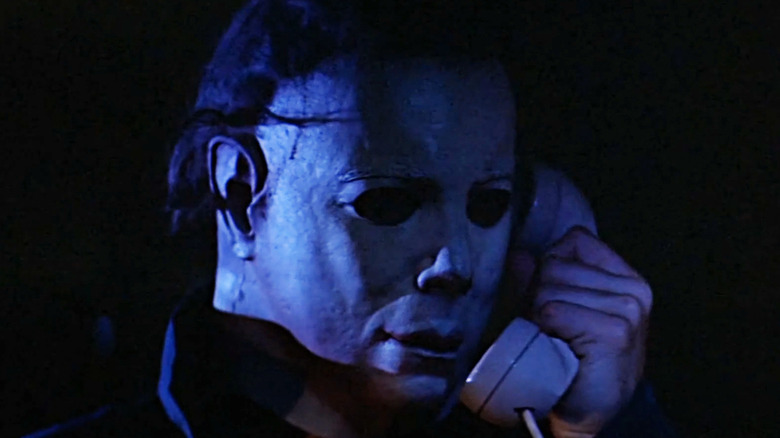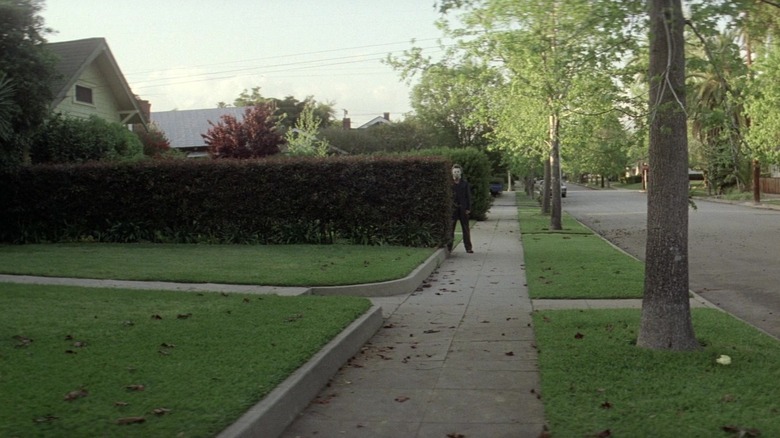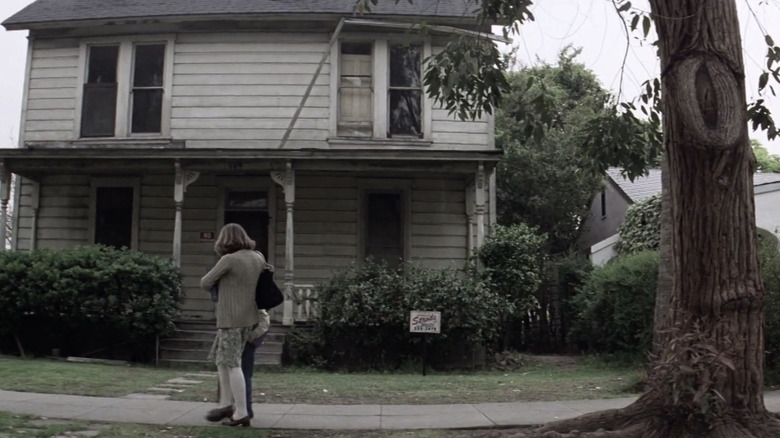South Pasadena Is Home To One Of The Most Infamous Movie Killers Of All Time
Los Angeles is less a city and more like a sprawling suburb. Outside of downtown and the wretched stretch of hell known as Hollywood Boulevard, the city is essentially a collection of smaller neighborhood villages, all of which are simultaneously unique while remaining distinctly L.A. But there's something different about South Pasadena. Situated just six miles from downtown, this city within the bounds of Los Angeles County feels like a quintessential middle American small town, complete with a humble main street, local library, and tree-lined streets that contain some of the most picturesque suburban homes you're ever likely to see — and chances are you have seen them. Even the most casual movie fan will, at one time, have seen South Pasadena on-screen, whether they realize it or not.
The city is a go-to destination for productions looking for that small-town feel. South Pasadena has played host to some truly legendary movies and TV productions — from to "Father of the Bride" to "Back to the Future" (which also shared a set with "The Twilight Zone") — and is basically ground zero for all those suburban family homes we saw in family films as kids and thought we'd be able to afford when we grew up (the "Home Alone" house in Chicago, notwithstanding). "South Pas," as it's also known, has likewise cropped up in less obvious ways throughout film and TV history. David Wallace's house from "The Office?" It's in South Pas. Will Ferrell and John C. Reilly's tuxedo-clad post-interview walk of shame in "Step Brothers?" South Pas. But arguably the town's most significant contribution to cinema history is as a stand-in for Haddonfield, Illinois, in John Carpenter's seminal 1970s coming-of-age slasher "Halloween."
South Pasadena was the perfect backdrop to Michael Myers' kill spree
You might not think a picturesque town on the west side of L.A.'s San Gabriel Valley would make the perfect setting for an Illinois-based horror movie. But not only was South Pasadena built by settlers from Indiana, giving the town an unmistakable Midwest charm, but there's a long history in horror of idyllic neighborhoods plagued by some nightmarish evil, and one of the most prominent examples is "Halloween."
John Carpenter's 1978 slasher classic benefited from South Pasadena's scenic environs as a way to heighten the pure terror embodied by Michael Myers. The unstoppable killer's sinister presence is so at odds with the everyday suburban life of Haddonfield, Illinois, by way of California, that he's somehow made even more imposing just by virtue of his surroundings. But it would be wrong to say South Pas was chosen for purely creative reasons. Carpenter had a budget of just $320,000 for "Halloween," and shooting in L.A. allowed him to keep costs low (the film eventually made a total of $70.2 million, making it an early example of a low-budget horror that made millions). South Pasadena had the look he needed, and the director made good use of the town's features — managing to turn a humble hardware store, several homes, and even an otherwise unremarkable hedgerow into icons of horror cinema.
Jamie Lee Curtis, who starred as Laurie Strode, lived at 1115 Oxley Street, which sits across the street from the South Pasadena Public Library. Late producer Moustapha Akkad now has a memorial bench in the park surrounding the library, which isn't far from "Nichol's Hardware Store" at 966 Mission Street, where Laurie and Annie Brackett (Nancy Kyes) meet Annie's sheriff father. Then, there was the hedge behind which Michael Myers hides when Laurie catches a brief glimpse of the killer in broad daylight. That single hedge has since become famous in its own right, with the owners of the South Pasadena home where this scene was shot telling LAist "Definitely around Halloween it's when you would start seeing people, but I feel like all year round there's at least one or two people that come by and take pictures. We are kind of used to it."
Michael Myers house has become a historic landmark
The only South Pasadena location that can really rival the famous hedge is Michael Myers' childhood home. This is the house where the opening sequence takes place, in which a young Michael (Will Sandin) murders his older sister in the bathroom, and we see the grim scene play out from his perspective. The house reappears throughout "Halloween," with Laurie Strode and Tommy Doyle (Brian Andrews) taking a stroll past the "spookhouse" in present-day Haddonfield and placing a key under the mat.
The Myers home, a dilapidated Victorian house built in 1888, was whitewashed by the "Halloween" crew and fixed up for shooting. It was later discovered to be the oldest surviving frame residence in South Pasadena and was in danger of being bulldozed until a local resident stepped in.
The house at 709 Meridian Avenue was due to be demolished in 1987 to make way for a hospital, but local resident David Margrave asked the workers to preserve the home and give him time to have it moved. Margrave then had the house transported onto nearby railroad property, which he didn't own. Thankfully, the city recognized the historical importance of the house and designated it as a local landmark. Today, the house remains at its spot next to the train tracks on Mission St., the main street in South Pasadena, right next door to the SugarMynt Gallery, an art gallery and museum featuring horror-themed exhibitions, including "Halloween." Though the home itself now houses several businesses, every Halloween it's swarmed by fans eager to catch a glimpse of the home that birthed one of the all-time scariest movie monsters.


